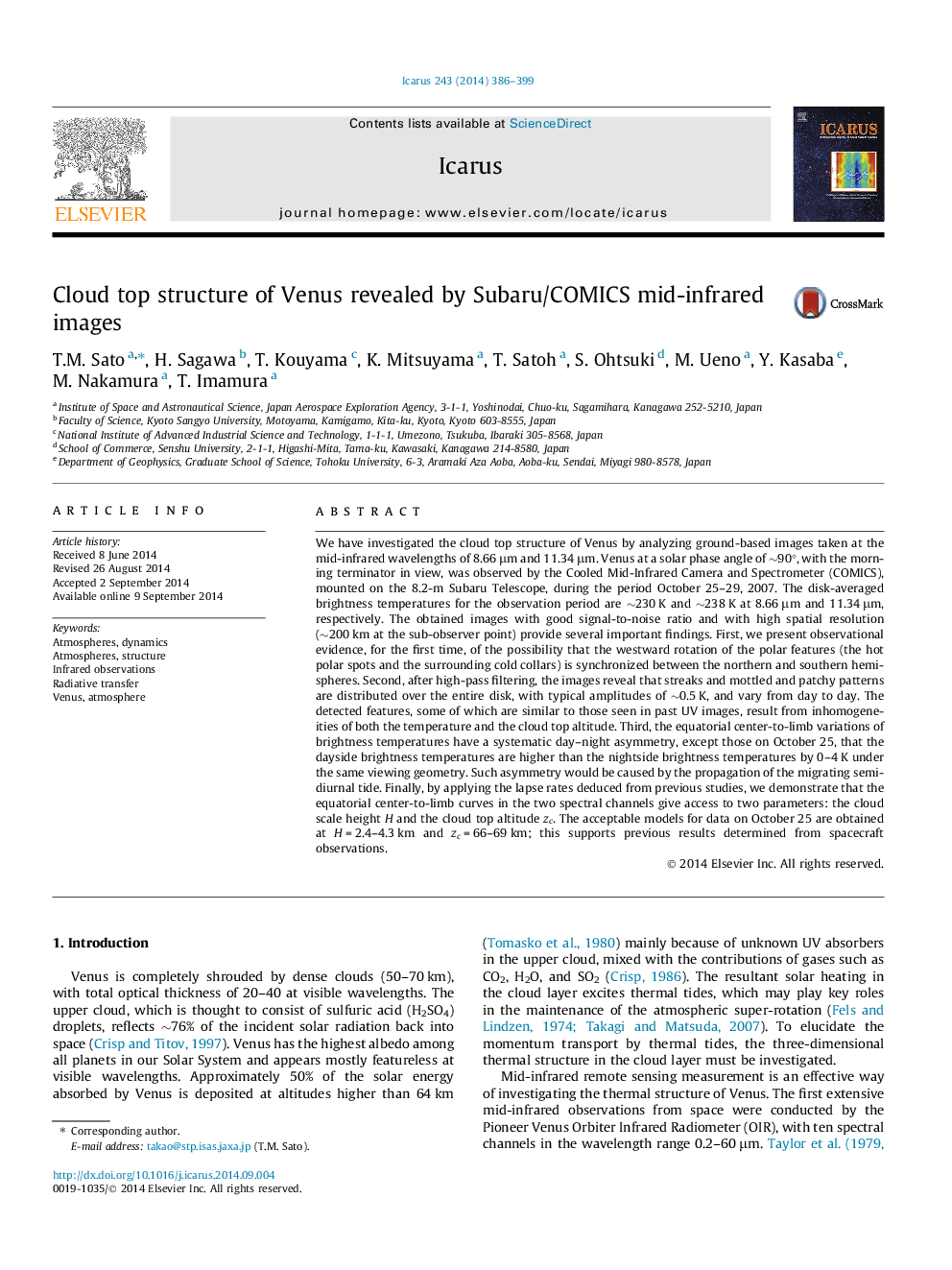| Article ID | Journal | Published Year | Pages | File Type |
|---|---|---|---|---|
| 1773106 | Icarus | 2014 | 14 Pages |
Abstract
We have investigated the cloud top structure of Venus by analyzing ground-based images taken at the mid-infrared wavelengths of 8.66 μm and 11.34 μm. Venus at a solar phase angle of â¼90°, with the morning terminator in view, was observed by the Cooled Mid-Infrared Camera and Spectrometer (COMICS), mounted on the 8.2-m Subaru Telescope, during the period October 25-29, 2007. The disk-averaged brightness temperatures for the observation period are â¼230 K and â¼238 K at 8.66 μm and 11.34 μm, respectively. The obtained images with good signal-to-noise ratio and with high spatial resolution (â¼200 km at the sub-observer point) provide several important findings. First, we present observational evidence, for the first time, of the possibility that the westward rotation of the polar features (the hot polar spots and the surrounding cold collars) is synchronized between the northern and southern hemispheres. Second, after high-pass filtering, the images reveal that streaks and mottled and patchy patterns are distributed over the entire disk, with typical amplitudes of â¼0.5 K, and vary from day to day. The detected features, some of which are similar to those seen in past UV images, result from inhomogeneities of both the temperature and the cloud top altitude. Third, the equatorial center-to-limb variations of brightness temperatures have a systematic day-night asymmetry, except those on October 25, that the dayside brightness temperatures are higher than the nightside brightness temperatures by 0-4 K under the same viewing geometry. Such asymmetry would be caused by the propagation of the migrating semidiurnal tide. Finally, by applying the lapse rates deduced from previous studies, we demonstrate that the equatorial center-to-limb curves in the two spectral channels give access to two parameters: the cloud scale height H and the cloud top altitude zc. The acceptable models for data on October 25 are obtained at H = 2.4-4.3 km and zc = 66-69 km; this supports previous results determined from spacecraft observations.
Keywords
Related Topics
Physical Sciences and Engineering
Earth and Planetary Sciences
Space and Planetary Science
Authors
T.M. Sato, H. Sagawa, T. Kouyama, K. Mitsuyama, T. Satoh, S. Ohtsuki, M. Ueno, Y. Kasaba, M. Nakamura, T. Imamura,
